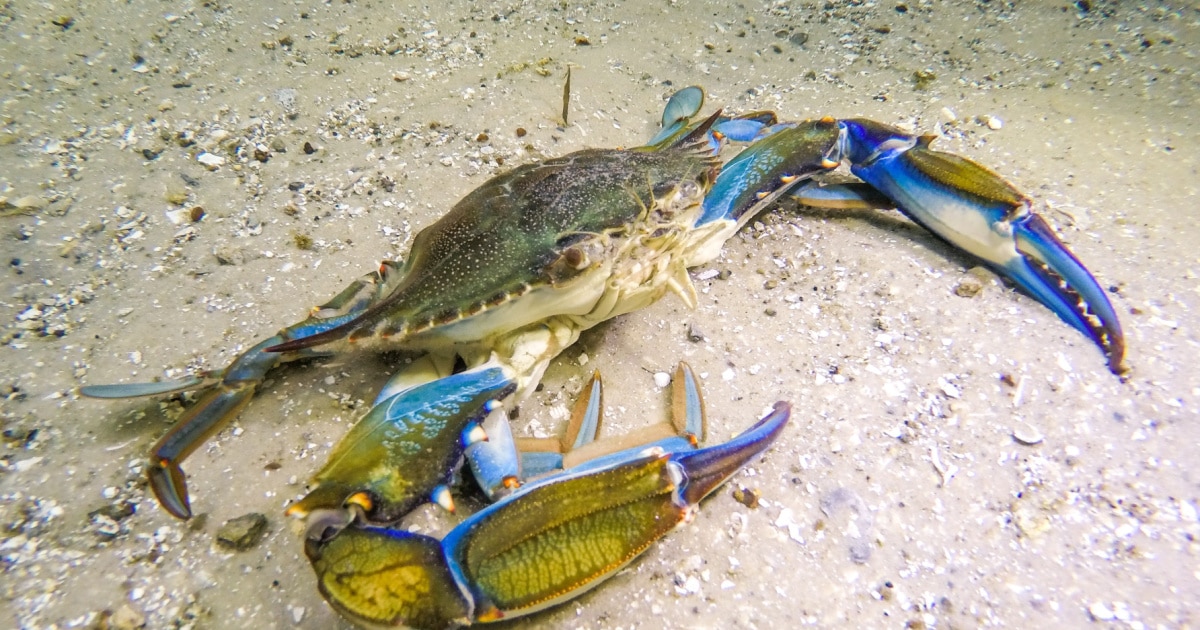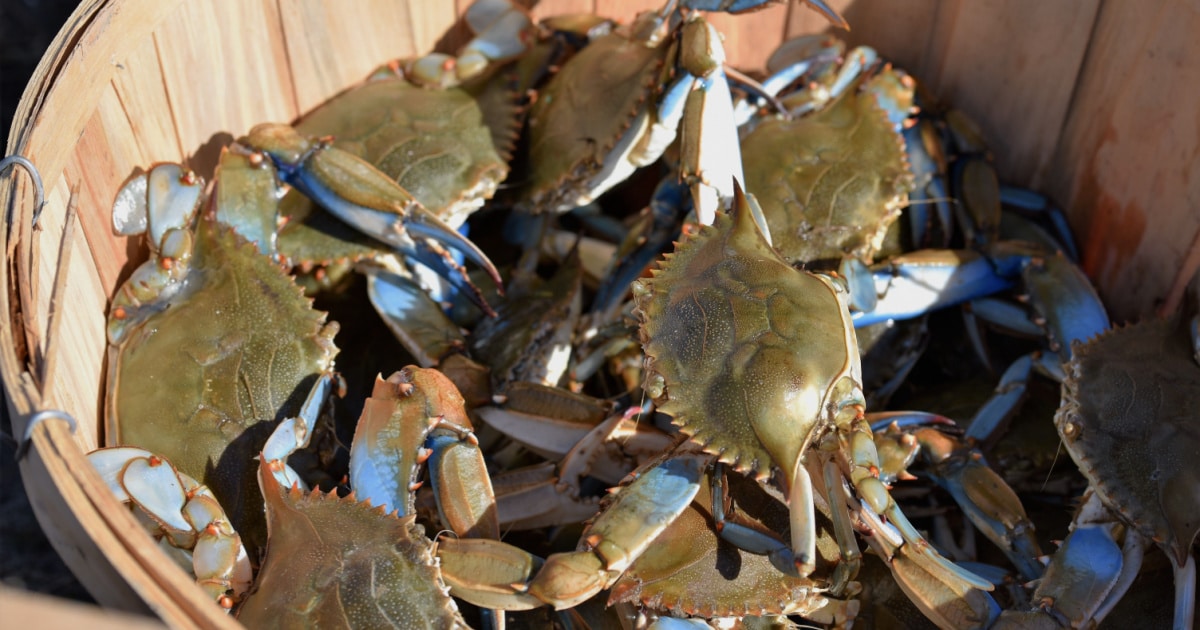Introduction: Can Blue Crabs Live in Freshwater? A Curious Question Explored
Hello to all our valued customers and fellow crab enthusiasts! Today, we’re diving into a fascinating topic that often sparks curiosity: “Can blue crabs live in freshwater?” As a business specializing in blue crabs, we encounter this intriguing question quite often from curious customers.
Blue crabs are well-known for thriving in saltwater environments, but there’s always been a bit of mystery about their ability to adapt to freshwater. It’s an interesting discussion, especially for those of us who are passionate about these delightful creatures.
In this article, we’ll explore the adaptability of blue crabs to different environments. Whether you’re a seasoned crab connoisseur or just curious about the aquatic world, this exploration will shed light on the life of blue crabs in freshwater. So, let’s set sail on this journey of discovery together!
- Understanding Blue Crabs: Saltwater Origins and Freshwater Journeys
- Blue Crabs in Freshwater: A Temporary Adventure or a New Home?
- Scientific Insights: Can Blue Crabs Live in Freshwater?
- Blue Crabs and Freshwater Aquariums: What You Should Know
- Reproduction and Lifecycle of Blue Crabs in Freshwater
- Conclusion: Understanding the Answer to ‘Can Blue Crabs Live in Freshwater?’
- FAQ ‘Can Blue Crabs Live in Freshwater’
- Explore More From T.L. Morris Seafood
Understanding Blue Crabs: Saltwater Origins and Freshwater Journeys
Blue crabs, a staple at our seafood business, are typically associated with saltwater environments. These environments, like the Chesapeake Bay, provide the perfect mix of salty water that blue crabs love. It’s in these places that they thrive, playing a crucial role in the marine ecosystem.
Now, you might be wondering about our main question: “Can blue crabs live in freshwater?” It’s a common query, especially considering that blue crabs are often found in areas where saltwater mixes with freshwater, known as estuaries. These crabs are pretty adaptable and can handle changes in their environment, including varying levels of salt in the water.
However, when it comes to living in purely freshwater environments, like rivers or lakes, blue crabs face more of a challenge. They’re built for life in saltier waters, where they can find all the nutrients they need. While they might venture into freshwater for short periods, it’s not their preferred or ideal living condition.
So, while blue crabs are known for their resilience and adaptability, their true home is in the saltwater, where they can be found in abundance and at their healthiest.
Blue Crabs in Freshwater: A Temporary Adventure or a New Home?
As we delve deeper into the question, “Can blue crabs live in freshwater?” it’s important to understand that blue crabs are naturally inclined to saltwater. However, their adventurous nature sometimes leads them into freshwater environments. This shift raises curiosity about their adaptability and survival outside their usual salty habitat.
In my experience running a seafood business, I’ve learned that blue crabs can indeed venture into freshwater, but they don’t typically make it their permanent home. It’s more like a temporary visit. These crabs have a remarkable ability to tolerate a range of salinity levels, which allows them to explore freshwater areas. However, their stay in such environments is usually short-lived.
The reason behind this is quite straightforward. Blue crabs rely on certain conditions found in saltwater to thrive – conditions that freshwater simply can’t provide. While they can survive for a time in freshwater, it doesn’t offer the same nutritional benefits or environmental factors they’re accustomed to in saltwater.
So, when customers ask us, “Can blue crabs live in freshwater?” we explain that while these crabs might take a brief detour into freshwater, they truly belong to the saltwater world. Their visits to freshwater are more about exploration and temporary adaptation rather than a permanent lifestyle change.

Scientific Insights: Can Blue Crabs Live in Freshwater?
When it comes to understanding whether blue crabs can live in freshwater, scientists have done some fascinating research. As someone in the seafood business, keeping up with these studies helps us understand our crabs better.
Researchers have found that blue crabs, known for their resilience, can indeed survive in freshwater for certain periods. This survival is possible due to their ability to adapt to different salinity levels. However, there’s a catch – while they can survive, thriving in freshwater is another story.
In their natural saltwater habitats, blue crabs have access to all the right conditions for growth, health, and reproduction. Freshwater environments, on the other hand, lack some critical elements that blue crabs need. For instance, the salinity level in freshwater doesn’t provide the essential minerals that blue crabs require.
So, what does this mean? Essentially, while blue crabs can make temporary visits to freshwater, they are not able to maintain their normal life cycle and health over the long term in these conditions. It’s like taking a fish out of water – they might manage for a bit, but it’s not where they’re meant to be.
Blue Crabs and Freshwater Aquariums: What You Should Know
For those of us in the seafood business, and especially for anyone considering keeping blue crabs in an aquarium, it’s crucial to understand how these creatures fare in freshwater settings. The question, “Can blue crabs live in freshwater?” is particularly relevant here.
Blue crabs are naturally inclined to saltwater, and this preference extends to their life in captivity. In a saltwater aquarium, they can thrive, exhibiting natural behaviors and maintaining good health. The environment mimics their natural habitat, providing them with the necessary conditions for a fulfilling life.
However, when it comes to freshwater aquariums, the situation changes. While blue crabs can survive in freshwater for a short period, it’s not an ideal long-term solution. The lack of salt can lead to health issues and a shortened lifespan. They miss out on the essential minerals and environmental cues that saltwater provides.
Therefore, if you’re thinking about setting up an aquarium for blue crabs, it’s best to replicate their natural saltwater environment. This ensures that the crabs remain healthy and active, just like they would be in the wild. Remember, while blue crabs are adaptable, providing them with an environment close to their natural habitat is key to their well-being.
Reproduction and Lifecycle of Blue Crabs in Freshwater
Understanding the reproduction and lifecycle of blue crabs is crucial, especially when considering their ability to live in freshwater. In our seafood business, we often get questions about how these aspects are affected when blue crabs are in a non-saltwater environment.
In their natural saltwater habitat, blue crabs have a specific lifecycle that includes mating, laying eggs, and nurturing their young in estuarine conditions where the salinity is just right. The female crabs release their eggs in these brackish waters, where the larvae have the best chance of survival.
However, in freshwater, the reproductive cycle of blue crabs faces significant challenges. The absence of saltwater conditions can impact both the mating process and the development of the larvae. While adult blue crabs might temporarily survive in freshwater, the environment is not conducive to the successful reproduction and growth of their offspring.
This means that while blue crabs can be found in freshwater, their ability to sustain a population in such conditions is limited. For blue crabs, the saltwater ecosystem is not just a preference; it’s essential for their lifecycle and the continuation of their species.
Conclusion: Understanding the Answer to ‘Can Blue Crabs Live in Freshwater?’
In conclusion, while the question “Can blue crabs live in freshwater?” might intrigue many, especially in our line of work, the answer is nuanced. Blue crabs, by nature, are saltwater creatures. Their forays into freshwater are temporary and not suited for their long-term survival or reproductive needs.
As we’ve explored, blue crabs can adapt to a range of environments, but their health and lifecycle are optimal in saltwater. For those of us passionate about these fascinating creatures, understanding and respecting their natural habitat is key. It ensures that we continue to enjoy and preserve the blue crab population for years to come.
FAQ ‘Can Blue Crabs Live in Freshwater’
- Can Blue Crabs Live in Freshwater?
- “While blue crabs can temporarily survive in freshwater, their natural habitat and preference is saltwater, where they thrive and reproduce effectively.”
- Why Do Blue Crabs Prefer Saltwater?
- “Blue crabs prefer saltwater because it provides essential minerals necessary for their health, aids in their osmotic balance, and supports their lifecycle and reproduction.”
- How Do Blue Crabs Adapt to Different Salinity Levels?
- “Blue crabs are adaptable and can tolerate varying salinity levels, allowing them to venture into brackish and freshwater areas temporarily.”
- What Challenges Do Blue Crabs Face in Freshwater?
- “In freshwater, blue crabs lack the essential minerals found in saltwater, which can lead to health issues and impact their ability to reproduce.”
- Can Blue Crabs Reproduce in Freshwater?
- “Reproduction of blue crabs in freshwater is challenging. Their natural reproductive cycle, including egg-laying and larval development, is optimized for brackish or saltwater conditions.”
- Is It Advisable to Keep Blue Crabs in Freshwater Aquariums?
- “Keeping blue crabs in freshwater aquariums is not ideal. They require saltwater conditions to maintain their health and well-being.”
- What Should Be Considered When Setting Up a Blue Crab Aquarium?
- “If setting up an aquarium for blue crabs, replicate their natural saltwater environment, including appropriate salinity, temperature, and diet.”
- What Role Do Blue Crabs Play in Their Natural Habitat?
- “In their natural saltwater habitat, blue crabs serve as both predators and scavengers, contributing to the ecological balance and health of their ecosystem.”
These FAQs provide a concise summary of the main points discussed in the article, offering readers quick and informative insights.
Explore More From T.L. Morris Seafood
If you enjoyed this post, you’re in for a treat! Dive deeper into seafood with some of my other articles that readers have loved:
- What Makes Choptank River Crabs and Oysters So Special?– Discover Maryland’s Choptank River crabs and oysters, a journey through the heart of local seafood traditions and the river’s natural beauty.
- Can You Eat Raw Crab Meat? Separating Fact from Fiction– People ask ‘Can You Eat Raw Crab Meat?’ – Discover the health risks of uncooked crab and learn safe preparation methods.
- Chesapeake Charm: The Story of Maryland Crabs and Their Cultural Legacy– Unveil the captivating world of Maryland crabs: a journey through the vibrant culinary legacy and deep-rooted traditions of the Chesapeake Bay.
Stay connected and keep exploring! Don’t forget to subscribe for the latest updates and insights.

